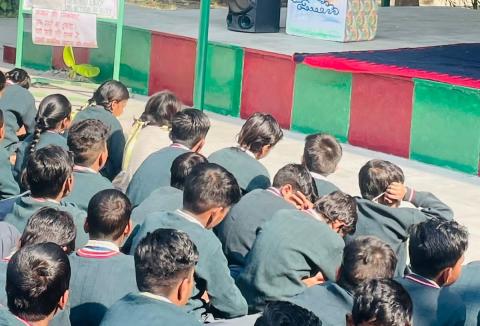
Shades of Childhood: Exploring Cultural Perspectives and Pedagogic Shifts in Education
In school teaching, one of the primary premises that we all believe in is that we teach children. However, who the children are, and what childhood is, remain absent from our discourse. The way it is absent from our discourse indicates that we have some concrete idea about childhood, and that informs our instructional design and the rest of the strategy that we use in the teaching and learning process in the classroom. I recently had the opportunity to attend a conference on the theme "Traditions of Childhood." I already had some idea that childhood has multiple shades and is not concrete, but the way I could come across on this theme was truly an eye-opener.
Mostly, what we believe about children today and how we see childhood is shaped by Western thinking of childhood, particularly promoted by the market. There are certain ideas that Western thinkers have championed, and the rest of the world believes this is how childhood should be. More or less, it includes seeing childhood as the period of innocence, with cute, vulnerable children needing protection and care, and so on. One fundamental mistake in this idea of childhood being traded is discounting the influence of cultures and traditions that shape childhood. Since cultures and traditions differ from one part of a country to another, from one part of the continents to another, the notions of childhood also become significantly different in different cultures.
I was absolutely amazed to see some of the papers dealing with how Indian folk culture has shaped the idea of childhood, and how our history, particularly the history of religions, has shaped our notions of the ideal child. Examples from Ramayana, Mahabharata, and religious child characters like Ganesha, Karthikeyan, etc., were presented. One interesting argument was how most great personalities of the past had different childhoods, and an attempt was made to show that most of the characteristics displayed in the latter stage of life were evident in their childhood as well.
There were paper presentations on how childhood is seen in Islam. One that I found truly interesting traced the development of the idea of childhood through 2000 years of history in Tamil Nadu, particularly post-Sangam literature. Another paper discussed how the Geeta Press and its use of symbols shaped the modern idea of childhood in contemporary India. One of the key points shared was that we do not need to agree with the Western idea of childhood; the understanding of childhood must be embedded in an understanding of culture and tradition, making it unique and different from how Western thinkers portray the idea of childhood. While going through these presentations, I was also thinking about how important it is to understand and preserve the Indian knowledge system, which is perhaps richer in some contexts than what the rest of the world has to offer.
I think, for teachers in the classroom, a significant move will be to accept that there is no fixed, concrete idea of childhood; there are different shades, and even engaging with this idea will mark a significant difference in the pedagogy of teachers. The important question is, are we ready to bring the discourse on childhood to schools and among teachers? If we dare to say yes, it will demand significant changes in the way we teach and learn because a monolithic idea of childhood creates pedagogic convenience. Are we ready to break free from this convenience and embrace a classroom that is truly dynamic?
- Log in to post comments
